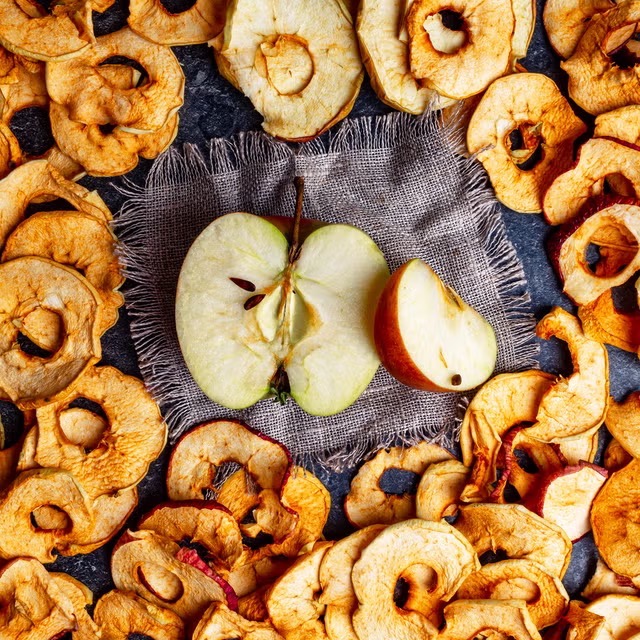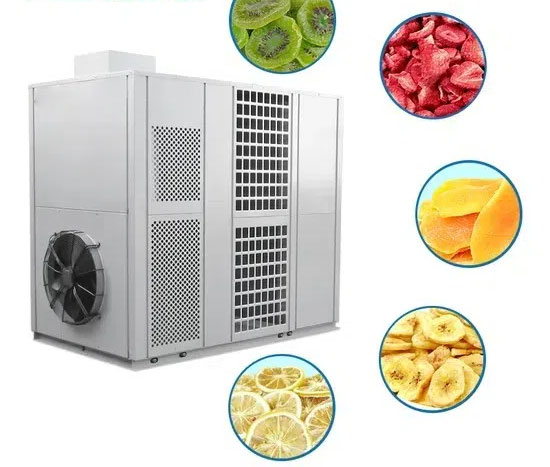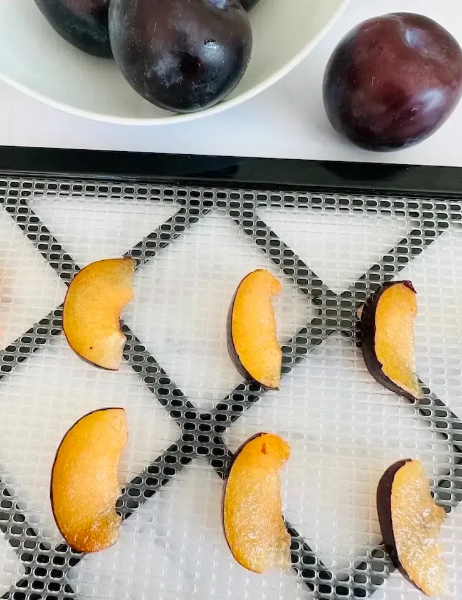
Content Menu
● Understanding Food Dehydration
● Benefits of Using a Food Dehydrator
● Nutritional Value of Dehydrated Foods
● How to Use a Food Dehydrator
● Popular Foods to Dehydrate
● Tips for Successful Dehydration
● Health Considerations
● The Science Behind Food Dehydration
● Common Misconceptions About Dehydrated Foods
● Creative Uses for Dehydrated Foods
● Popular Recipes Using a Food Dehydrator
● Conclusion
● FAQ
>> 1. Are dehydrated foods healthy?
>> 2. Do dehydrators remove nutrients from food?
>> 3. Can I dehydrate any type of food?
>> 4. How long do dehydrated foods last?
>> 5. Is it safe to eat dehydrated foods?
● Citations:
Food dehydrators have surged in popularity as more individuals seek healthier eating habits and sustainable food preservation methods. This article explores the health benefits of using food dehydrators, how they work, and their impact on nutrition, ultimately answering the question: Is a food dehydrator healthy?

Understanding Food Dehydration
Food dehydration is a process that removes moisture from food, inhibiting the growth of bacteria, yeast, and mold. By using low heat and circulating air, dehydrators preserve food without cooking it, which helps maintain its nutritional value. This ancient preservation method has been utilized for centuries, allowing people to enjoy fruits, vegetables, and meats long after their harvest season.
Benefits of Using a Food Dehydrator
Using a food dehydrator offers numerous advantages:
- Nutrient Retention: Dehydrating foods helps retain essential vitamins and minerals. Unlike other preservation methods such as canning or freezing, which can lead to significant nutrient loss (up to 60-80%), dehydration results in only about 3-5% nutrient loss.
- Convenience: Dried foods are lightweight and easy to store, making them ideal for camping, hiking, or quick snacks on the go. They can also be easily incorporated into meals like soups and stews.
- Long Shelf Life: Dehydrated foods can last for months or even years when stored properly. The absence of moisture prevents spoilage and reduces food waste.
- Cost-Effective: Investing in a food dehydrator can save money in the long run. You can buy fruits and vegetables in bulk when they are in season and dehydrate them for later use.
- Flavor Enhancement: The dehydration process concentrates flavors, making dried fruits and vegetables taste more intense than their fresh counterparts.
Nutritional Value of Dehydrated Foods
One common concern about dehydrated foods is whether they lose nutritional value during the drying process. Research indicates that while some vitamins may degrade slightly (particularly vitamin C), most nutrients remain intact. For instance:
- Caloric Density: Dehydrated foods are calorie-dense due to the removal of water content. This means that while they retain their nutritional profile, they should be consumed in moderation to avoid overeating.
- Fiber Content: Dried fruits and vegetables maintain their fiber content, which is crucial for digestive health. Fiber aids in digestion and helps prevent constipation.
- Antioxidants: Many dehydrated foods retain high levels of antioxidants, which are beneficial for combating oxidative stress in the body.
How to Use a Food Dehydrator
Using a food dehydrator is straightforward:
1. Preparation: Wash and cut fruits or vegetables into uniform pieces to ensure even drying.
2. Blanching (optional): Some vegetables may benefit from blanching before dehydration to preserve color and texture.
3. Dehydration: Place the prepared food on trays within the dehydrator. Set the temperature according to the type of food being dried (typically between 125°F to 165°F).
4. Storage: Once dried, store the food in airtight containers in a cool, dark place to maximize shelf life.
Popular Foods to Dehydrate
Many types of foods can be effectively dehydrated:
- Fruits: Apples, bananas, strawberries, mangoes, and apricots are popular choices. They can be sliced into chips or pureed into fruit leathers.
- Vegetables: Carrots, tomatoes, bell peppers, and zucchini are excellent candidates for dehydration. They can be used in soups or as snacks.
- Herbs: Basil, thyme, oregano, and parsley can be dried for use in cooking throughout the year.
- Meats: Lean cuts of beef or turkey can be made into jerky by marinating them before dehydration.
Tips for Successful Dehydration
To ensure optimal results when using a food dehydrator:
- Cut Uniformly: Ensure all pieces are similar in size for even drying.
- Avoid Overloading Trays: Spread food out evenly without overcrowding to allow proper air circulation.
- Check Moisture Levels: Test for dryness periodically; fully dried foods should snap or feel leathery without any moisture inside.
- Store Properly: Use airtight containers or vacuum-sealed bags to keep moisture out after dehydration.
Health Considerations
While dehydrated foods offer many benefits, there are some considerations:
- Portion Control: Due to their concentrated nature, it's easy to consume more calories than intended with dried foods. Be mindful of portion sizes.
- Nutrient Interactions: Some dehydrated foods may contain high levels of certain nutrients that could interfere with medications (e.g., vitamin K-rich foods affecting blood thinners). Consult with a healthcare provider if you have concerns about dietary restrictions related to medications.
The Science Behind Food Dehydration
The science behind dehydration involves removing water content from food through evaporation while retaining its structure and nutrients. This process typically occurs at low temperatures (between 120°F - 160°F) which helps preserve enzymes that contribute to flavor and nutrition.
Dehydration works by creating an environment where moisture cannot exist; thus preventing microbial growth that leads to spoilage. When water is removed from food items like fruits or vegetables, it not only extends their shelf life but also intensifies their flavors since the sugars become concentrated during this process.

Common Misconceptions About Dehydrated Foods
Despite their benefits, there are several misconceptions surrounding dehydrated foods:
- Myth 1: All Nutrients Are Lost During Dehydration
Many believe that dehydration strips all nutrients from food; however, studies show that most vitamins remain intact post-dehydration compared to other preservation methods like freezing or canning which can lead to significant nutrient loss[5][6].
- Myth 2: Dried Fruits Are Unhealthy
While some commercial dried fruits may contain added sugars or preservatives, homemade versions can be incredibly healthy snacks packed with fiber and antioxidants[9][12].
- Myth 3: You Can't Rehydrate Dried Foods
Some think rehydrating dried foods is ineffective; however, many dishes benefit from adding water back into these ingredients—soups or stews often utilize rehydrated vegetables for enhanced flavor profiles[18][20].
Creative Uses for Dehydrated Foods
Dehydrated foods aren't just limited to snacking; they can enhance various culinary creations:
- Trail Mixes: Combine dried fruits with nuts and seeds for a nutritious snack perfect for hiking or outdoor adventures.
- Smoothies: Blend dried fruits into smoothies; they add natural sweetness without excess liquid.
- Soups & Stews: Dried vegetables rehydrate quickly when added directly into soups or stews during cooking.
- Baking Ingredients: Incorporate powdered dried fruits into baked goods like muffins or pancakes for added flavor without moisture interference[17][19].
Popular Recipes Using a Food Dehydrator
Here are some popular recipes you might consider trying with your food dehydrator:
1. Apple Chips
- Slice apples thinly.
- Sprinkle with cinnamon if desired.
- Dehydrate at 135°F for approximately 6–8 hours until crisp.
2. Vegetable Chips
- Use kale or sweet potatoes; slice thinly.
- Lightly coat with olive oil and seasonings.
- Dehydrate at 130°F for about 8–10 hours until crunchy.
3. Fruit Leather
- Puree your favorite fruit (like strawberries).
- Spread evenly on trays lined with parchment paper.
- Dehydrate at 135°F for around 6–8 hours until pliable but not sticky[4][13].
4. Homemade Jerky
- Marinate lean cuts of beef overnight.
- Slice against the grain; dehydrate at 160°F for about 4–6 hours until firm yet slightly pliable[14][15].
5. Herb Seasoning
- Dry fresh herbs like basil or oregano at low temperatures (95°F).
- Once dry, crush them into jars for seasoning throughout the year[16][18].
Conclusion
Incorporating dehydrated foods into your diet can be both healthy and convenient. They offer an excellent way to enjoy fruits and vegetables year-round while retaining most of their nutritional value. However, it's essential to consume them in moderation due to their concentrated caloric content.

FAQ
1. Are dehydrated foods healthy?
Yes, dehydrated foods retain most of their nutrients and provide a healthy alternative to processed snacks.
2. Do dehydrators remove nutrients from food?
While some nutrients may be lost during dehydration (especially vitamin C), most vitamins and minerals remain intact.
3. Can I dehydrate any type of food?
Most fruits, vegetables, herbs, and even meats can be dehydrated successfully.
4. How long do dehydrated foods last?
When stored properly in airtight containers away from light and moisture, dehydrated foods can last for months or even years.
5. Is it safe to eat dehydrated foods?
Yes, as long as they are prepared correctly and stored properly, dehydrated foods are safe to eat.
Citations:
[1] https://etsolutions.in/is-eating-dehydrated-food-healthy-explore-ecotech-food-dehydrator/
[2] https://foodassets.com/info/dehydrated-food-versus.html
[3] https://www.backpackingchef.com/dehydrating-food.html
[4] https://www.callmelore.com/fool-proof-healthy-dehydrator-recipes/
[5] https://www.webmd.com/diet/dehydrating-food-good-for-you
[6] https://www.kencko.com/blog/the-goods/does-dehydrated-food-and-vegetables-lose-nutritional-value
[7] https://www.cnet.com/pictures/tips-for-using-your-new-dehydrator/
[8] https://eatsleepwild.com/homemade-dehydrated-backpacking-meals/
[9] https://etsolutions.in/10-amazing-benefits-of-electrical-food-dehydrator-machines/
[10] https://backpackinglight.com/forums/topic/72141/
[11] https://www.reddit.com/r/nutrition/comments/lro3a8/does_dehydrating_food_affect_the_nutrients/
[12] https://www.theseasonalhomestead.com/9-benefits-of-dehydrating-food-that-may-surprise-you/
[13] https://silva-intl.com/blog/dried-and-delicious-the-health-benefits-of-dehydrated-foods
[14] https://www.bestbuy.com/discover-learn/10-reasons-to-buy-a-food-dehydrator/pcmcat1634332391134
[15] https://www.webstaurantstore.com/guide/741/food-dehydrators-buying-guide.html
[16] https://www.nisbets.co.uk/benefitsofafooddehydrator
[17] https://www.backpackingchef.com/food-dehydrator-recipes.html
[18] https://homesteadingfamily.com/preservation-101-intro-to-dehydrating-food/
[19] https://www.reddit.com/r/Cooking/comments/pbck40/dehydrator_recipes_that_arent_jerky_or_dried_fruit/
[20] https://westonbrands.com/weston-dehyrating-tips
[21] https://www.youtube.com/playlist?list=PL6ygl2lNPriODiu2XahnHHUhj6mEObz0P
[22] https://www.allrecipes.com/article/how-to-use-a-food-dehydrator/
[23] https://www.sunbeam.com.au/recipes/dehydrator-recipes
[24] https://www.pinterest.com/tribestlife/dehydrator-recipes/
[25] https://brodandtaylor.com/pages/dehydrating
[26] https://www.freshoffthegrid.com/dehydrating-food/
[27] https://www.commercialdehydrators.com.au/dehydrating-recipes-filters
[28] https://www.youtube.com/watch?v=ygE6PlbZKGA











